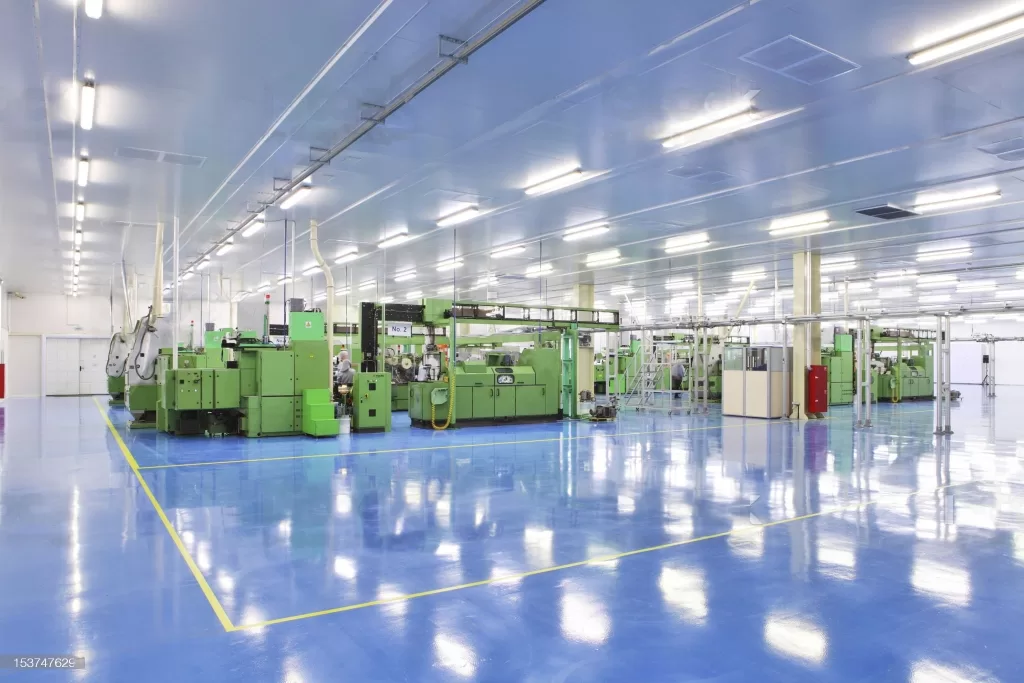Lighting is mostly used for illumination. It can also be used for other things, like setting up a specific environment or atmosphere. A lighting designer must take the following factors into account in order to obtain a specific lighting project outcome:
• Direction: Pay attention to the topic.
• The brightness of a light is referred to as intensity.
• Softness: the subject’s lighting’s harshness or softness
• Colour: The temperature of your light

Additionally, lighting designers should take into account the following crucial lighting design components:
• Determination of illumination: For industrial buildings, the IEC establishes illumination standards. Illuminance is also based on the particular use of the lights.
• Lamp type: Over the years, high-efficiency lighting has become increasingly popular. The use and height of the lamp placements have an impact on the lighting fixture selection. Lighting technique and lamp type are always complementary.
• Lighting control techniques: Each room has unique lighting management needs. The control system of choice for safety should be simple to use, maintain, monitor, and, in some cases, be able to establish circumstances for energy conservation.
Customer needs and desires are considered during design.
Table of Contents
ToggleA great and reputable lighting designer has a number of traits. Giving clients what they want and need is a perfect example. Lights have a number of objectives that aren’t always the same. Some lighting designers may fall short of their clients’ expectations due to misunderstandings with the client, a lack of inventiveness, or a failure to focus on the goals. A lighting designer should pay attention to the following in order to prevent this scenario:
Recognising the Customer
When it comes to their lighting requirements, some consumers typically know what they want. However, many clients find it difficult to express their demands. Consequently, a designer must pay close attention to the customer as they attempt to articulate their needs. They ought to create a setting where clients can convey their lighting objectives. A designer might use their knowledge to make recommendations. When attempting to interpret the lighting requirements of a consumer, patience is essential.
Comprehending the Goals
A lighting designer must have a clear understanding of the goals of a lighting project before beginning. Always keep in mind that good lighting design produces and improves functionality, pays attention to details, takes the client’s style into account, and fits the client’s budget. Additionally, it might improve the customer’s way of life.
In this illustration, the mall’s requirements differ greatly from those of the office building. Whereas the office only receives what it requires, the mall receives abundant, bright lighting.
The Light Design Has Some limitations.
Light design is necessary for the optimal result because it can fully utilise all available alternatives. Unfortunately, this only happens rarely. The following factors restrict their ability to have a large impact in their field of employment:
Budget
Typically, clients expect lighting designers to operate within their financial constraints. Simply put, lighting designers are only able to work within the confines of the customer’s budget. The lighting designer can only deal with what the buyer can afford because lamps and other electrical items have a range of prices. One of the biggest challenges that lighting designers encounter is budgetary constraints.

Code Limitations
The use of particular codes and rules is mandated by both the federal and local governments. Utilising these codes improves productivity, performance, and safety. The NPFA, the National Electrical Code, and the Energy Code are a few examples. Because of this, regardless of how imaginative a designer is, they must make sure that their ideas adhere to the established standards and guidelines.
Locations of Light
Designers aim to make a space have a particular interaction, emotion, and impact. They must adopt a comprehensive strategy for light design in order to achieve this, using the ideal light colour, intensity, and texture for maximum impact. Keeping in mind that the outcome will be influenced by where the light source is located.
Examples of the most popular light sources are:
The ground, the upward-facing wall, the ceiling and the walls, and the slots and coves
The best lamp to install will depend on the location of the light. In other words, the sort of lighting lamps used are somewhat determined by the placement of the light source, which restricts the lighting designer’s inventiveness.
Power/ampere load
The word “amp load” refers to the maximum amperage that can be drawn from a power source or transformer. Depending on the age and type of services installed in a building, different amp loads will be needed. Since each fixture has a set amp, the choice of bulbs will also be affected by the amp load. This is because a designer will only be able to use lamps and other electrical equipment that is compliant with the designated amp load.

What are the purposes of lighting in the end?
Understanding the varied uses of lighting is essential to effective lighting design. The two primary ones are as follows:
Light often offers a pleasant illumination level that enables people to see properly and move around securely. This is known as utilitarian (for utilisation). Lighting’s main purpose is to provide illumination. Numerous non-directional lights are often used for general lighting. Both commercial and domestic uses of it are prevalent.
Lighting is one of the best instruments for interior design. Accent, task, decorative, and mood lighting are the four fundamental forms of lighting used in interior design. Ambience and decoration are essential for a number of tasks, including cooking and looking inside cabinets. Depending on what they hope to accomplish with the illumination, users can select the kind of light they prefer.
Both are frequently present; in this essay, we examine the safety of essential lighting and ornamental requirements at Disneyland.
Considerations for Safety and the Code
The most commonly used regulations that have an impact on planning for lighting upgrades (IECC) are the ASHRAE Standard 90.1-2013 and the International Energy Conservation Code 2015, both of which are accepted by state and local governments. Municipalities typically approve these regulations and give them a year.
Even the most perfectly constructed space might be diminished by a poorly lit workspace. You can see how challenging the process may be when you consider all the different elements that go into creating a well-lit space. If you don’t overthink it, picking a light fixture can seem like a simple choice. Consider the following lighting design concepts when choosing office lighting:
The lighting needs to be sufficiently bright for users. A bright light makes the area more pleasant by helping people make sense of their surroundings. Keep in mind that dispersion and brightness are always taken into account together. And the presence of natural light has an impact on them.
For safety reasons, it is essential to make sure the lighting is not too intense. To achieve these levels of lighting, you must figure out the area’s square footage as well as the foot-candle factor for the type of room, the number of lumens needed to light the area, and the bulbs and fixtures to use to get that number of lumens.
Emergency lights must be used for the sake of public safety. OSHA and UL have established minimum performance standards for emergency lights in order to ensure that they function as expected when needed. The amount of voltage that your batteries must deliver is not predetermined. Building owners can use nickel-cadmium or sealed lead-acid batteries to power their emergency systems.
According to UL requirements, every cell installed for emergency lighting must be able to power the lights for 90 minutes. As you enter a room or walk onto a front porch, certain lights switch on automatically. In these circumstances, motion-sensing lights come into play. The power source, light pattern, and bulb type are the characteristics to look for in motion sensor lights.
Returning to the customers’ communication
In order to achieve their light design aims, it is important to comprehend the customer. As a result, effective communication must be established by light designers. To understand the client, they must be able to articulate their thoughts, queries, and visualisations. Only in cases where a designer can get crucial information from the client will there be effective communication. They should ascertain the worries and apprehensions of their clients.
Having Conversations with Other Partners
Alongside other experts like architects, contractors, and electricians, lighting designers are used.
• Architects and lighting designers examine the shop drawings for lighting equipment. They must effectively communicate while taking notes and adding markups to the designs to indicate where adjustments are required.
- Contractors: Lighting designers should perform their research, assign responsibilities, discuss subcontractors (if applicable), give detailed drawings, schedule regular meetings, record procedures, collaborate, and be reachable in order to effectively communicate with contractors.
- Electricians: When an electrician works with a lighting designer, the lighting designer is responsible for creating, marketing, and documenting all electrical and lighting options for the project. Typically, the electrician purchases and installs the materials, with lighting designers designing the procedure. Effective communication between the two is necessary.
Conclusion:
In conclusion, the art of lighting design is a crucial element that can transform any space, whether it’s a home, office, or event venue. By considering the four key elements of lighting design – functionality, aesthetics, efficiency, and sustainability – you can create an atmosphere that not only meets your practical needs but also enhances the overall ambiance and mood.
Remember, lighting design is a blend of science and art, requiring careful planning and attention to detail. Whether you’re designing a residential space or a commercial establishment, it’s essential to prioritize functionality by understanding the purpose of each area and providing appropriate lighting solutions.
Additionally, aesthetics play a vital role in setting the right mood and creating a visually pleasing environment. Experiment with different lighting fixtures, colors, and intensities to achieve the desired effect and create a unique atmosphere.
Efficiency is another crucial aspect to consider. Opt for energy-efficient lighting options like LED bulbs and fixtures, which not only help you save on utility bills but also have a longer lifespan. By investing in smart lighting systems, you can further enhance efficiency by controlling and automating your lighting setup.
Lastly, sustainability is an increasingly important consideration in lighting design. By opting for eco-friendly lighting solutions and reducing energy consumption, you can contribute to a greener future while enjoying the benefits of efficient and well-designed lighting.
If you’re ready to transform your space with exceptional lighting design, visit our website at https://illustrious.co.in for a wide range of lighting products and professional services. Our team of experts is ready to assist you in creating the perfect lighting design that meets your specific needs and preferences.
Don’t miss out on the opportunity to elevate your space with stunning lighting arrangements. Contact us today at +91 9958077611 via WhatsApp to get started on your lighting design project. Let us illuminate your world with brilliance and style.
Remember, the right lighting can make all the difference, so take the first step towards creating an extraordinary space.
